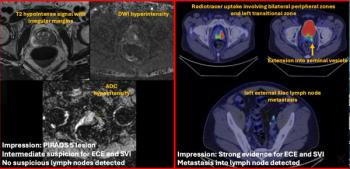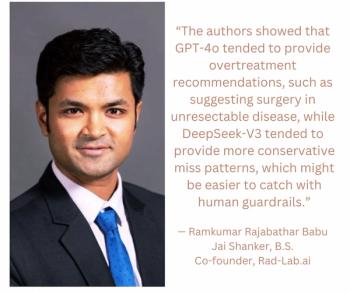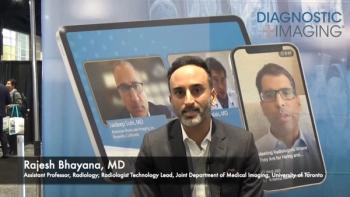
Evolution of Radiology Reports: Getting Information To the Patient
Technology is changing how patients consume radiology results.
With new technology, like artificial intelligence and the drive to meet patient’s needs, radiology reports are at a cross-roads for joining these two initiatives.
Tessa Cook, MD, PhD from the University of Pennsylvania said at RSNA 2017 that informatics can help bridge the needs of patients, physicians, and radiologists. Radiology reports have been around for centuries and most radiologists continue to create reports in a similar way to that of their predecessors 100 years ago, according to Seth Berkowitz, MD, from Beth Israel Deaconess. So why have radiology reports not changed much in the last 100 years?
First, the radiologist’s workflow and computer systems historically have kept the images being analyzed and the text of the report separate. Second, the delivery of the report requires specific systems on both the sender and receiver side to be able to send and read the report. Third, currently, radiologists are paid based on the volume of cases analyzed, not by time and a study by Rosenkrantz AB in 2014 suggested that more intricate reports will take more time (and reduce the number of cases that can be analyzed). Finally, vendor support in creating a program to generate a different kind of report has been lacking or difficult to use. These barriers are important to keep in mind for how radiology reports can and may evolve.
Berkowitz suggested that in order to improve delivery of radiology findings to the patient, radiologists must first focus on creating better reports for physicians, such as multimedia reports, which are radiology reports containing any element beyond text, including images, tables, graphs, hyperlinks, and video/audio. The idea of a multimedia report is not new and, in fact, was originally presented in 1989 by Schramm and Goldberg. Various attempts have been made to bring the multimedia report to the forefront of radiology and there is research by
Transitioning to a New Radiology Report
At the University of Pennsylvania, they have built a Patient-Oriented Radiology Reporter (PORTER) that annotates the text of the radiology report to make it easier to understand for patients. The report the patients receive is the exact report from the radiologist, with hyperlinked terms to definitions and Wikipedia, and images to accompany terms, and a photo of the interpreting radiologist is included as well.
Overall, this type of report has received positive feedback from patients, but some patients complained that they did not feel the report prepared them for a more in-depth conversation with their surgeon. Cook explained that the purpose of these plain language reports was to demystify the radiology report for the patient, which may have not been easily accessible before, and PORTER was not trying to replace the interaction and conversation between the patient and the doctor. This is one example of a new radiology report that was developed in house, but other examples are in process and Berkowitz noted that there are vendors and computer systems that are now supporting multimedia reports with the rise of artificial intelligence and informatics.
What Else Does a New Report Bring?
By freeing the radiology report from being only text, there is immense possibility in how the role of the radiologist will change in interacting with patients. Berkowitz suggested that maybe radiologists can provide patients with immediate feedback about their results?
Cook acknowledged that the current workflow makes it hard for radiologists to meet with patients and caretakers even though they may want to have this type of interaction. Dana Habers, MPH, from the University of Michigan encouraged radiologists to be flexible with what patients need today, “You are the doctor’s doctor, and patients want to hear from you. They want to know what to expect and when to expect the results.”
Habers referred to the changing landscape of health care in which patients are more involved in their care and want to know what is going on in a timely manner, which is extremely applicable to radiology. New systems and new technology are coming that will change how radiologists work and this will make it hard to go back to only text reports.
Newsletter
Stay at the forefront of radiology with the Diagnostic Imaging newsletter, delivering the latest news, clinical insights, and imaging advancements for today’s radiologists.




























